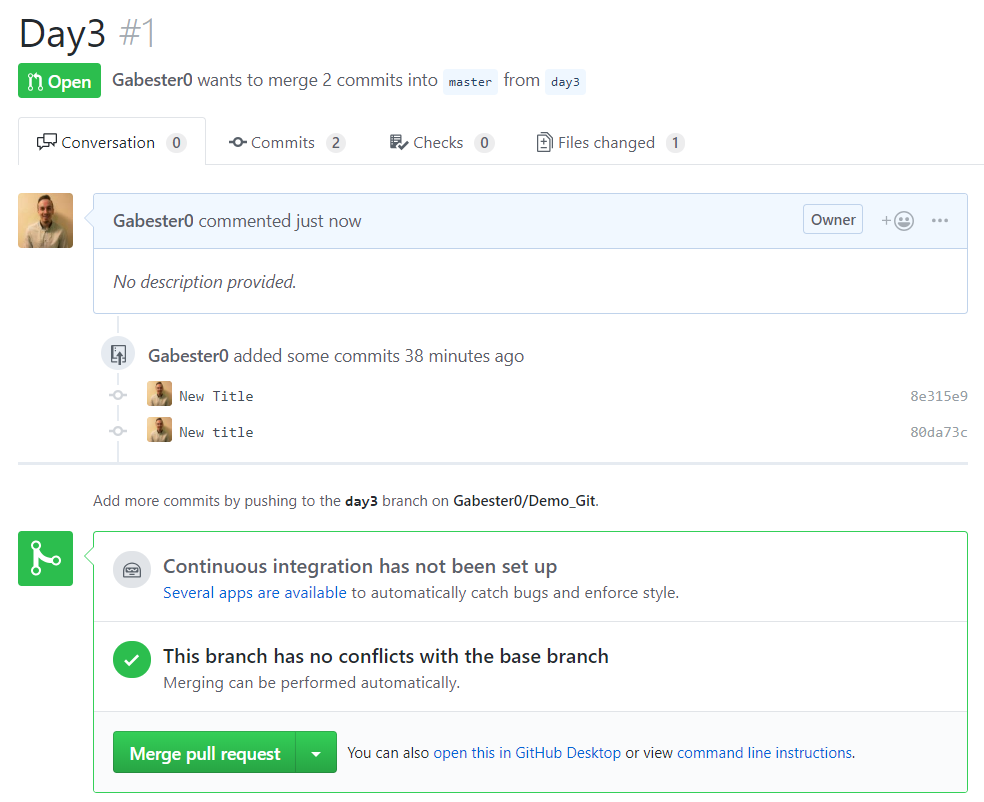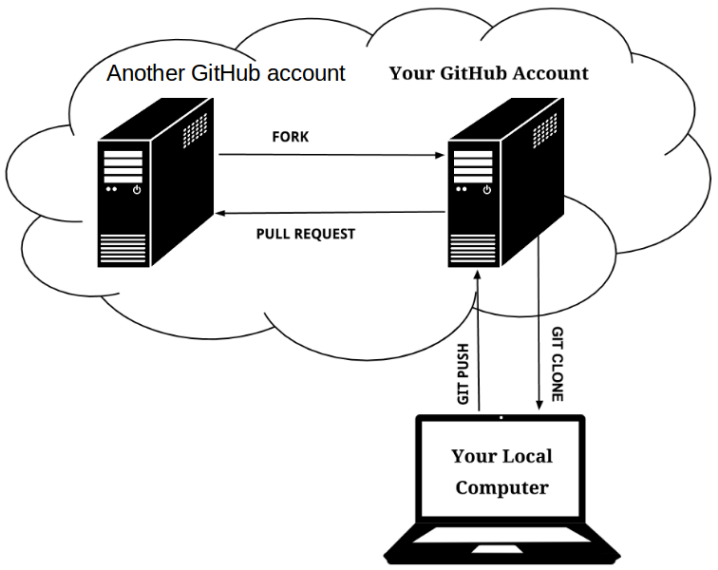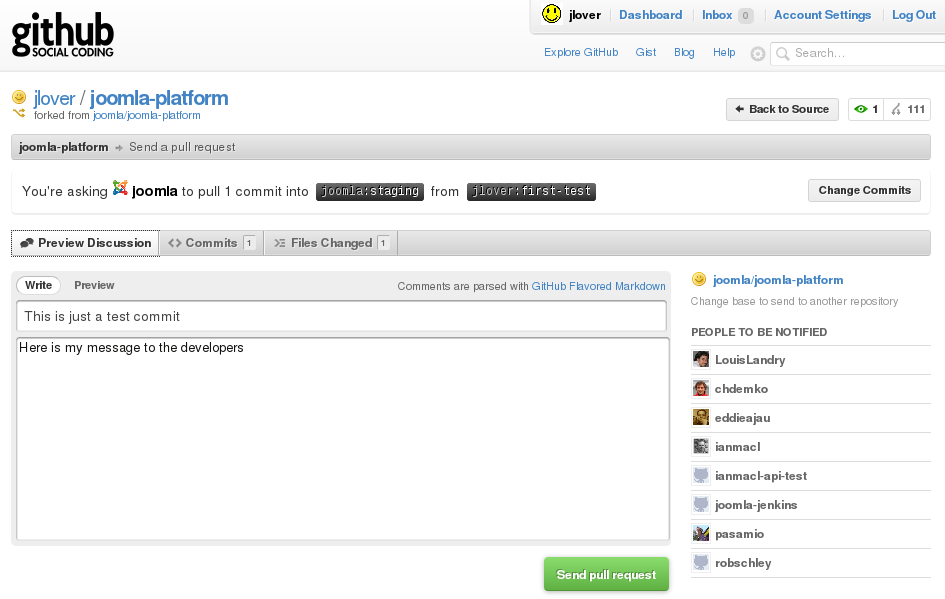

Which will perform a normal merge (as pull would've done) or git checkout master When you've finished testing and want to integrate, you can either do git checkout master

Which will create the temp branch, which now points to the latest history on the remote repository. You could now create a temp branch to do checks on origin/master by doing git checkout -b temp_branch_name origin/master You're branch names could differ, but the process is still the same. I'm assuming you're working on (local) master, which is a remote tracking branch of origin/master.

This means that when going to origin, origin/master would be updated to point to the latest change on origin, but your local master is not merged, or changed to reflect these changes. In practice fetch gets all the named commits from the remote repository. This information is left for a later merge operation done by git merge. The ref names and their object names of fetched refs are stored in. Push again and wait for the bot to go over your PR again (every 30 minutes) until a green check-mark appears.It sounds like you're looking for the fetch commandįetches named heads or tags from one or more other repositories, along with the objects necessary to complete them. Go ahead, take a look and fix those errors. Usually, one or more link(s) are displayed right below for you to visualize in a browser what it's all about. This error is a bit more serious and means your PR isn't complying with our QA standards. But no big deal as there's nothing for you to do. Indeed, every now and then developers break the tree and, tough luck, it turns out you forked the tree into your GitHub profile or synced it up at this very moment. This error means that unfortunately, you forked the tree whilst it was in a very unstable state (meaning broken). Issues persisted from underlying repository state: At this point, it might point out two types of error: Our QA bot is chatty when a red cross shows up. Taken from the official github page (in July 2013, but this may change): Step 1: Check out a new branch to test the changes run this from your project directory. a red cross meaning something is up and your PR needs fixing.a green check-mark meaning everything's fine and your PR isn't offending the tree.These checks may result in two possible outcomes displayed next to your PR: We have set up an automated CI system which performs various QA checks when a PR is filed. QA checks gentoo-repo-qa-bot is engaging in a conversation with me in the PR. The bot won't post messages all over the place though, but these useful information will appear in the ChangeLog file of the ebuild.
#GIT PULL REQUEST FREE#
The bot will write a message in each bug report:įeel free to add as much information as possible: upstream forums, mailing lists, discussions, links to changelogs, etc. If the commit involves several bug reports, they can be mentioned and stack the links. Will automatically write a message in the bug report, change the status of the bug report to RESOLVED and the resolution to FIXED.

Will automatically write a message in the bug report without closing it. This feature helps Gentoo developers save time as they don't have to switch back and forth between Bugzilla, GitHub, and their terminal to figure out which bug reports may be closed.
#GIT PULL REQUEST PATCH#
That way, other users quickly get to know a patch or a fix has landed in the tree. The bot then writes a message in the bug report and/or closes it. Making a pull request is explained at length in the various how-tos put together by the GitHub folks, here are two must-read how-tos:ĭev $ git push -signed origin master Links to bug report(s)Ī bot automatically picks up bug reports if the link(s) to the bug in question appear(s) in the body of the commit message. 5.1 gentoo-repo-qa-bot is engaging in a conversation with me in the PR.3.5 Step 5: Developer merges to the tree.3.4.2 Variant b: By means of the PRam tool.3.4 Step 4: Developer fetches the PR and reviews.3.1 Step 1: User updates the local repository.2.1.2 Variant b: Using the git repository as the ::gentoo repository.2.1.1 Variant a: User configures a local repository.


 0 kommentar(er)
0 kommentar(er)
